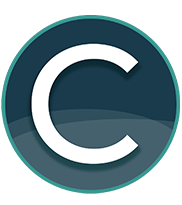
By clicking “Accept”, you agree to the use of cookies on your device in accordance with our Privacy and Cookie policies
Continuously improve upon the security program while continuing to grow the business.
Compyl works with the technology your organization works with.
Begin building a scalable security program.
Build and maintain a robust risk management process.
Manage vendor due diligence and risk assessments.
Mature your security program quickly.
Create and centralize policies, standards, and procedures.
Securely store and monitor all contracts.
Streamline security with automated efficiencies.
Establish and monitor permissions for all users.
Catalog, access, and track all IT Assets.
Demonstrate the ability to effectively safeguard customer data's security, integrity, confidentiality, and privacy.
Prove the strength of your Information Security Management System to prospects and customers worldwide.
Organizations handling health information need to have measures in place & follow them.
Improve the security posture of information systems used within the federal government.
Guidelines to encourage best practices among financial institutions in Singapore.
This global security and privacy framework provides comprehensive information, risk, and regulatory protection.
We proactively monitor for the latest frameworks to ensure our customers environments remain secure at all times. Contact us and learn about the additional frameworks Compyl supports.
Let Us Guide You Through Your InfoSec & Compliance Journey.
Learn how to use the Compyl Platform.
Watch all Security Session Episodes
Real-world stories on how we help our customers.
Our mission and purpose are unique, just like the solution we created.
We are very serious about our security. See the measures we take.
Join our diverse team of intelligent, respectful, and passionate individuals.
We are ready to secure your organization today!
Show Article Summary
Show Full Article
In today’s fast-paced digital world, IT security has become a critical concern for businesses of all sizes. Cyber-attacks and data breaches are becoming increasingly common, with hackers targeting businesses for sensitive information and financial gain. Therefore, complying with IT security frameworks is essential for any business looking to protect itself from cyber threats. In this article, we will discuss the essential IT security frameworks for anyone doing business in 2023, their applicability, and why they are popular.

An IT security framework is a structured approach to addressing cybersecurity risks. It provides businesses with a set of guidelines and best practices for protecting their systems, networks, and data from cyber threats. IT security frameworks can include policies, procedures, standards, and guidelines that organizations can use to assess and manage their cybersecurity risk.
IT security frameworks are essential for businesses because they provide a systematic approach to addressing cybersecurity risks. They help organizations identify and prioritize their security risks, establish security policies and procedures, and monitor and improve their security posture continuously. By complying with IT security frameworks, businesses can reduce the risk of data breaches, improve their security posture, and demonstrate to customers and partners that they take security seriously.
Complying with IT security frameworks can be a challenging task for businesses, particularly those with limited IT resources. Here are some general steps to help organizations comply with IT security frameworks:
Understand the Framework: Read and understand the IT security framework’s requirements and recommendations. Identify any gaps in your existing security practices.
Develop a Plan: Develop a plan to address any gaps identified in step one. The plan should include specific actions, timelines, and responsibilities for each task.
Implement the Plan:Implement the plan and track progress regularly. Ensure that all employees are aware of their responsibilities and receive the necessary training.
Review and Monitor: Regularly review and monitor your security posture to ensure that you remain compliant with the IT security framework.
The International Organization for Standardization (ISO) and the International Electrotechnical Commission (IEC) developed ISO IEC 27001. This framework is applicable to all types of organizations, regardless of their size, industry, or location. It is popular because it provides a structured approach to managing information security risks and complying with various regulations and standards. ISO IEC 27001 requires organizations to implement a comprehensive information security management system (ISMS) that covers people, processes, and technology.
NIST 800-53 Cybersecurity Framework
The National Institute of Standards and Technology (NIST) developed the NIST 800-53 Cybersecurity Framework. It is applicable to federal agencies, contractors, and other organizations that deal with sensitive government information. The framework is popular because it provides a flexible approach to managing cybersecurity risks based on an organization’s risk profile. The NIST 800-53 Cybersecurity Framework includes a comprehensive set of security controls and guidelines for implementing them.
NIST 800-171 is a set of guidelines for protecting Controlled Unclassified Information (CUI) in non-federal systems and organizations. The framework is applicable to all non-federal organizations that handle CUI. NIST 800-171 is popular because it provides a detailed set of requirements for protecting CUI, including access control, incident response, and awareness and training.
The NIST Cybersecurity Framework (CSF) is a voluntary framework that provides guidance for organizations looking to improve their cybersecurity posture. The framework is applicable to all types of organizations, regardless of their size, industry, or location.
The NIST CSF is popular because it provides a flexible, risk-based approach to managing cybersecurity risks. It includes five core functions: Identify, Protect, Detect, Respond, and Recover, which organizations can use to improve their cybersecurity posture.
The SOC 2 framework was developed by the American Institute of CPAs (AICPA) and is applicable to service organizations that provide services to other organizations. SOC 2 is popular because it provides a set of criteria that service organizations can use to demonstrate their ability to securely manage customer data. The criteria include security, availability, processing integrity, confidentiality, and privacy.
The Center for Internet Security (CIS) developed the CIS Controls Version 7. The framework is applicable to all types of organizations and provides a prioritized set of best practices for securing your organization’s IT systems and data. The CIS Controls Version 7 includes 20 critical security controls, which organizations can use to improve their cybersecurity posture.
The COBIT framework was developed by ISACA and is applicable to all types of organizations. It provides a set of best practices for governance and management of IT systems and data. COBIT is popular because it provides a holistic approach to managing IT risks, including cybersecurity risks.
The Committee of Sponsoring Organizations of the Treadway Commission (COSO) developed the COSO framework. It is applicable to all types of organizations and provides a set of best practices for internal controls, including cybersecurity controls. COSO is popular because it provides a comprehensive approach to managing risks, including cybersecurity risks.
The HITRUST CSF was developed by the Health Information Trust Alliance (HITRUST) and is applicable to organizations in the healthcare industry. It provides a set of best practices for managing cybersecurity risks in the healthcare industry. HITRUST CSF is popular because it provides a comprehensive approach to managing cybersecurity risks specific to the healthcare industry.
The Ten Steps to Cybersecurity framework was developed by the UK government and is applicable to all types of organizations. It provides a set of best practices for managing cybersecurity risks. The framework includes ten steps that organizations can use to improve their cybersecurity posture.
The Federal Risk and Authorization Management Program (FedRAMP) is applicable to federal agencies, cloud service providers, and other organizations that provide cloud services to federal agencies. FedRAMP is popular because it provides a standard approach to assessing and authorizing cloud service providers’ security controls.
The Health Insurance Portability and Accountability Act (HIPAA) is applicable to healthcare organizations and provides a set of regulations for protecting patients’ sensitive health information. HIPAA is popular because it provides a set of specific requirements for protecting patient data, including access control, security, and breach notification.
The General Data Protection Regulation (GDPR) is applicable to organizations that process the personal data of individuals in the European Union. GDPR is popular because it provides a set of specific requirements for protecting personal data, including data subject rights, breach notification, and data protection by design and by default.
The Federal Information Security Management Act (FISMA) is applicable to federal agencies and provides a set of guidelines for managing cybersecurity risks. FISMA is popular because it provides a comprehensive approach to managing cybersecurity risks in federal agencies.
The New York Department of Financial Services (NY DFS) cybersecurity regulation is applicable to financial institutions in New York State. It provides a set of regulations for protecting customer data and information systems. NY DFS is popular because it provides a specific set of requirements for protecting customer data, including risk assessments, encryption, and incident response planning.
The California Consumer Privacy Act (CCPA) is applicable to organizations that collect personal information from California residents. CCPA is popular because it provides a set of specific requirements for protecting personal information, including data subject rights, breach notification, and data protection by design and by default.

While complying with multiple IT frameworks can be complex and time-consuming, it is essential for any organization that wants to protect its information systems and data. Organizations need to maintain a high level of security to prevent data breaches, cyber-attacks, and other security incidents that can compromise sensitive information and damage the organization’s reputation.
However, manually managing compliance with multiple frameworks can be challenging, especially for organizations that lack dedicated compliance teams and resources. That’s where automated compliance and audit platforms come in.
Automated compliance and audit platforms can help organizations manage their compliance more efficiently. These platforms use algorithms and machine learning to identify compliance gaps, automate compliance workflows, and provide actionable insights into an organization’s compliance posture. This can help organizations save time, reduce the risk of compliance failures, and maintain compliance with multiple IT frameworks simultaneously.
Moreover, automated compliance and audit platforms offer a range of other benefits, including centralized management of compliance activities, reduced compliance costs, and improved collaboration across different teams and stakeholders. They also provide a secure and auditable record of compliance activities, which can help organizations demonstrate compliance with various regulations and frameworks during audits and inspections.
In summary, while complying with IT frameworks may seem daunting, it is essential for any organization that wants to stay ahead of the curve in terms of information security and data privacy. Automated compliance and audit platforms can help organizations streamline their compliance activities, reduce compliance risks and costs, and maintain a strong cybersecurity posture. By leveraging these platforms, organizations can focus on their core business activities while leaving the compliance management to the experts. To learn if Compyl is a good fit for your organization, reach out to us today and see just how we can help.
Compliance with multiple IT frameworks is essential for any organization that wants to protect its information systems and data. This guide provides an overview of the essential IT security frameworks for any business in 2023, including ISO IEC 27001, NIST, SOC 2, HIPAA, GDPR, and more. Additionally, this article highlights how automated compliance and audit platforms can help organizations streamline their compliance management and maintain a strong cybersecurity posture.

We modernize and streamline the way organizations remain secure and compliant
See why so many organizations use Compyl as a single pane of glass to understand their entire organization's security and compliance program.